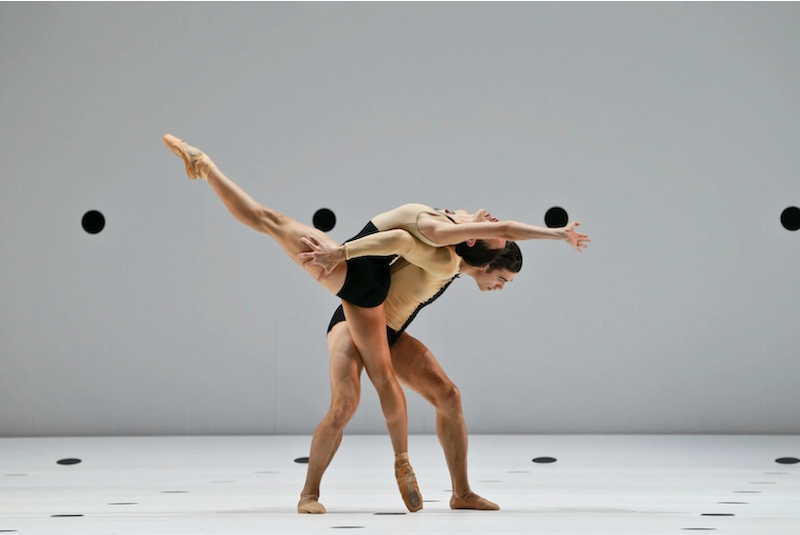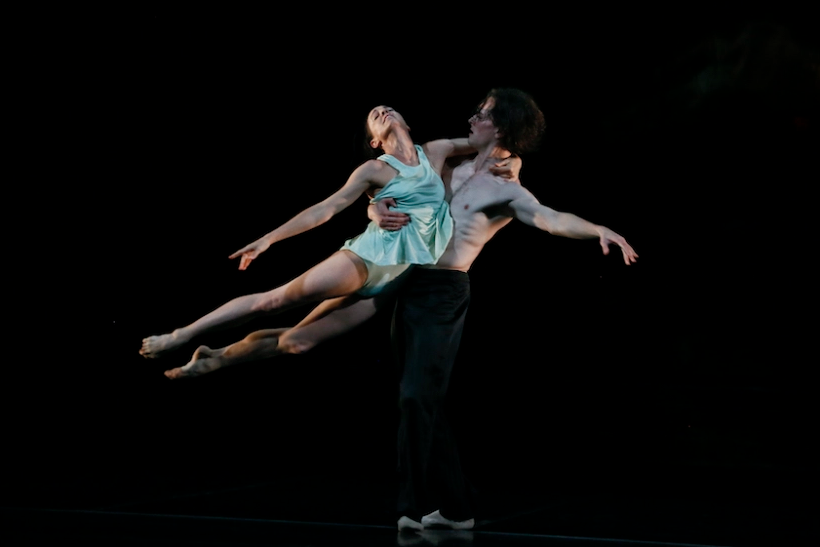This year’s contemporary program from the Australian Ballet is a little incongruent. With no obvious thematic rationale – not even variety – the triple bill impresses on some fronts, but not all.
 Dyad 1929. Photograph © Jeff Busby
Dyad 1929. Photograph © Jeff Busby
Opening the evening is Wayne McGregor’s ground-breaking work from 2006, Chroma, which seeks to reveal the invisible through a process of subtraction. At first, this seems contrary to the frenetic concoction of movement thrust forward by the dancers. Hyperextended lines, diving torsos and tilted turns erupt in nauseating waves, pushed by the music of indie rock duo The White Stripes.
But closer inspection reveals total restraint. McGregor has been careful to choreograph no more movement than is necessary. As a counterpoint to the smooth white box in which the dance unfolds (design by John Pawson), the bodies articulate with clinical, near alien, precision.
Or at least that’s the intention. McGregor’s impossibly complex material, littered with unorthodox lifts and quick-fire sequences, sat uneasily on the ensemble. Save for a few standout performances by principals Brett Chynoweth and Amy Harris, who both embodied the challenging movement with total confidence, the company lacked the attack and cool precision demanded of them.
However, it was the opposite in Dyad 1929, the second McGregor work of the evening, which allowed the company to shine. Created specifically for the Australian Ballet just three years after Chroma, this later work offers similarly intricate partnering, over-split legs and threading limbs.
But there’s also a softness, absent in Chroma, that allows the dancers to meet the choreography, not sit behind it. Personality is glimpsed too; not more so than in senior artist Dana Stephensen, who hit every crisp and off-kilter line with oodles of attitude.
Steve Reich’s mathematical thriller Double Sextet, admirably played by Orchestra Victoria, drives the dance forward at a dizzying pace. There’s an expansiveness in the score, felt most acutely in the final movement, that’s matched in McGregor’s layering of virtuosic lifts and flashes of unison. Here, the dancers were in superb form; rightly claiming the work as their own.
 Logos. Photograph © Jeff Busby
Logos. Photograph © Jeff Busby
Sandwiched between the two McGregor pieces was Logos, a new work from resident choreographer of the Australian Ballet, Alice Topp. In her second mainstage work (after Aurum in 2018), the rising star finds greater clarity and confidence in her artistic voice – one concerned with the human condition.
Using bodies for what they are, more so than what they can do, Logos asks us to reflect on the inner demons we constantly manage, lest they overcome us. In a series of barefooted pas de deux, circling limbs, precarious balances and crumpling collapses tell a story of the tenderness we afford ourselves and those around us.
Topp’s understanding of partnering is impressive, but the overall composition needed greater direction in its focus to sustain the emotional tension. Buswell’s design – featuring roving squares of light, a moving “painting” of billowing smoke, and rainfall on stage – is truly stunning but impresses more than the choreography.
Although less technically complex, Logos serves as an emotional counterpoint to McGregor’s clinical experiments. And while Topp is only at the start of a promising choreographic career, billing her between two works from the British iconoclast (only one of which was performed well on opening night) made for an uneven program.











Comments
Log in to join the conversation.